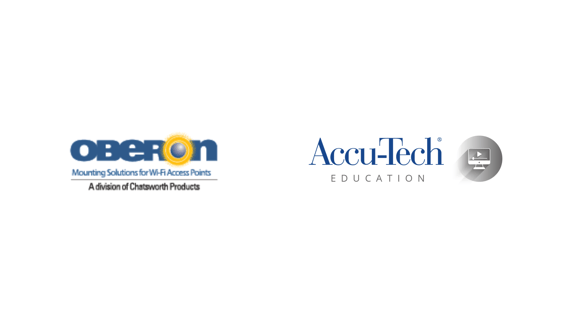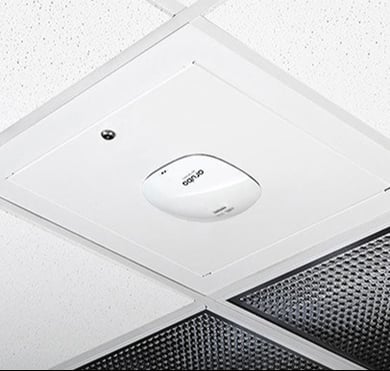Chalk boards, paperback, and projectors are no longer the right hand resources for teachers and students engaging with each other at school. Instead, personal computers and Wi-Fi powered devices empower today's students to explore new methods of learning, with the help of technology platforms like virtual reality, augmented reality, and artificial intelligence.
Additionally, teachers and professors increasingly rely on Wi-Fi-enabled tools like electronic systems for real-time grading and record-keeping.
Despite the demand for improved Wireless infrastructure, both modern and historical educational institutions are known to only integrate new technologies if they align with their environment's aesthetics and architecture. As a result, when it comes to deployment within the Education market, wireless experts must rely on discreet wireless AP solutions that won't compromise performance.
In a recent white paper published by Oberon, A Division of Chatsworth Products, Bree Murphy, RCDD, Global Technical Training Applications Engineer, outlines the top wireless AP trends to consider in Educational facilities during the network planning phase of a Wireless project.

Considering Wireless AP Trends and Industry Guidelines on Campus
Here are a few wireless AP trends to consider during the network planning phase of a Wireless project on campus:
Inevitable AP Upgrades as Wireless Technology Evolves Exponentially
New Wi-Fi Enabled Devices and Applications Continue to Emerge and Saturate Networks
AP Throughput Continues to Increase by a Factor of 10x Every Five Years
Power-over-Ethernet (PoE) Requirements of APs Continue to Increase
AP Form Factors Continue to Evolve, Which Requires Intentional Planning for Physical Security and Adaptation
Wireless LANs Continue to Provide Additional Services Requiring More Bandwidth
The Need For High Density AP Deployments in Educational Facilities

Evidently, there has been a shift towards reevaluating AP installation methods. The latest techniques for deploying wireless APs are now being integrated into the initial planning phase of wireless infrastructure design.
For customers who are designing a wireless AP infrastructure for an educational facility, Oberon recommends prioritizing consistency, compatibility, ease of support, and cost minimization. Consider factors such as maintenance, security, and the use of enclosures for physical security. Additionally, by following industry guidelines, campuses can ensure a reliable and efficient wireless network that meets the needs of everyone on-site.
Recommended Physical AP Deployment Methods
-
Offer quick and easy serviceability of the AP and cabling components
-
Provide a consistent look and maintenance functionality throughout the facility
-
Offer a cost-effective migration path to next-generation technologies
|
|
|
Wireless APs need to be versatile in order to handle next-generation networks. They must also be physically secure, protected from the elements, and blend seamlessly into the surroundings in order to provide excellent wireless coverage to both indoor and outdoor areas. Adopting these techniques will help to maximize investment protection and flexibility of the school’s network now and into the future.
Oberon offers a wide variety of enclosures and mounts that fulfill various operational and functional requirements. Their products, such as the Wi-Tile™ 1047 Series, NetPoint™ Wireless Bollards, and H-Plane™ 1007 Series, provide secure and seamless solutions for wireless coverage in different environments. These enclosures are NEMA-rated, UV-resistant, and designed with aesthetics in mind, like the versatile Skybar™ Series.
To find more campus-wide solutions, and the importance of network infrastructure in educational facilities and campuses, visit oberonwireless.com.
Accu-Tech’s total solution approach to technology within the Education space can enable campuses to accommodate the latest emerging technologies, manage constantly increased bandwidth requirements, and adapt to the influx of intelligent devices powered by the network-- all while enhancing the student, teacher, and staff experience.
Contact a local Accu-Tech Representative to incorporate Oberon solutions into your unique Education application.




.png?width=58&height=58&name=X_logo_2023_(white).png)
